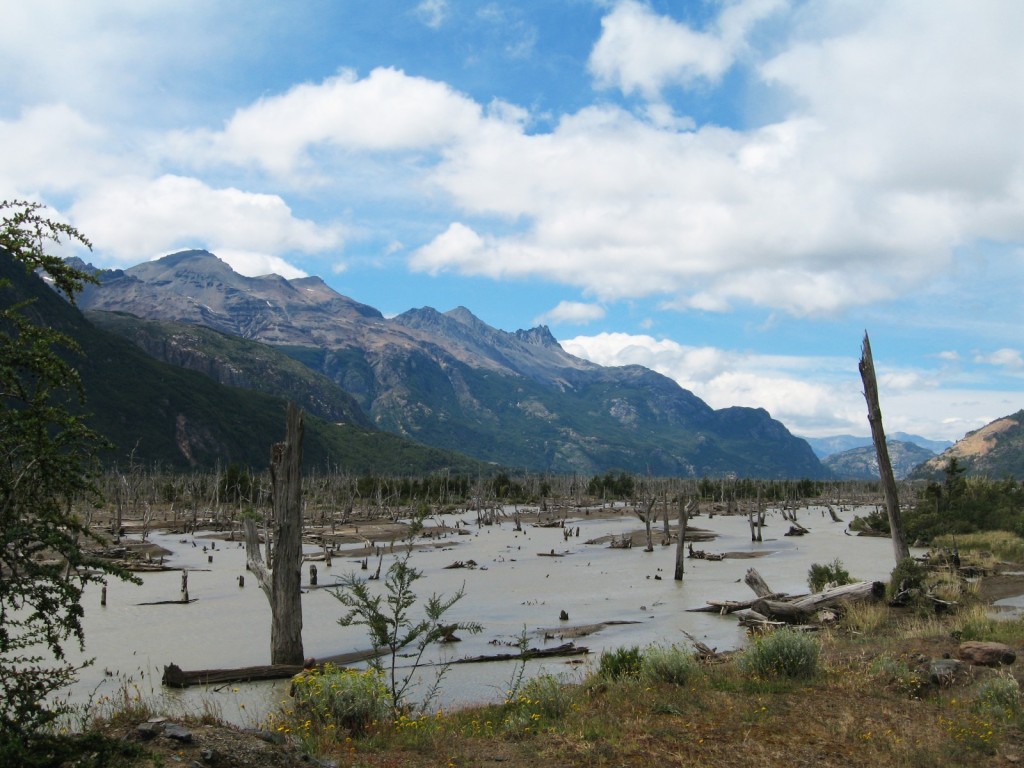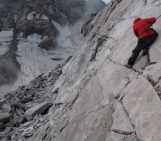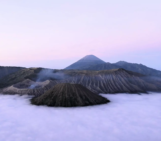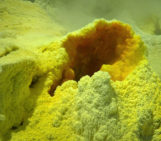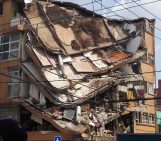Imagine a torrent of hot and cold water, laden with rock fragments, ash and other debris hurtling down a river valley: this is a lahar. A by-product of eruptions of tall, steep-sided stratovolcanoes, lahars, are often triggered by the quick melting of snow caps and glaciers atop high volcanic peaks.
The history of the Ibañes River and its valley, in southern Chile, are dominated by their proximity to Hudson volcano (or Cerro Hudson, as it is known locally). Located in the Andean Southern Volcanic Zone, the volcano has an unsettling history of at least 12 eruptions in the last 11,000 years. That equates to a major eruption every 3,800 years or so! The volcano has a circular caldera, home to a small glacier and is neighboured by the larger Huemules glacier.
One of the most significant eruptions occurred in 1991. It is thought to be one of the largest eruptions, by volume, of the 20th Century. At its peak, the eruption produced an ash plume thought to be in excess of 17km high, with ash being deposited as far away as the Falkland Islands. The initial eruptive phase was highly explosive. Known as phreatomagmatic eruption, hot and gas rich magma mixed with ice and water from the glacier on the summit of Mt. Hudson. As the eruption progressed, a period of sustained melting of both the caldera glacier and Huemules glacier began. The result of this was a 12 hour period of persistent lahar generation, with volcanic debris laden torrents racing down the Ibañes valley and its neighbours.
Fast forward to 2009 and the effects of the eruption of 1991 are still visible in the Patagonian Landscape. Lucien von Gunten photographed the inhospitable ‘Bosque Muerto’ (Dead Forest), in the Ibañes valley. The accumulation of the lahar deposits and the ash fall from the eruptive column clogged up the Ibañes river and valley killing a large proportion of the local flora and fauna. The ‘Bosque Muerto’ remains a stark reminder of the devastating effects of the 1991 eruption.
Reference
David J. Kratzmann, Steven N. Carey, Julie Fero, Roberto A. Scasso, Jose-Antonio Naranjo, Simulations of tephra dispersal from the 1991 explosive eruptions of Hudson volcano, Chile, Journal of Volcanology and Geothermal Research, Volume 190, Issues 3–4, 20 February 2010, Pages 337-352
If you pre-register for the 2015 General Assembly (Vienna, 12 – 17 April), you can take part in our annual photo competition! From 1 February up until 1 March, every participant pre-registered for the General Assembly can submit up three original photos and one moving image related to the Earth, planetary, and space sciences in competition for free registration to next year’s General Assembly! These can include fantastic field photos, a stunning shot of your favourite thin section, what you’ve captured out on holiday or under the electron microscope – if it’s geoscientific, it fits the bill. Find out more about how to take part at http://imaggeo.egu.eu/photo-contest/information/.

